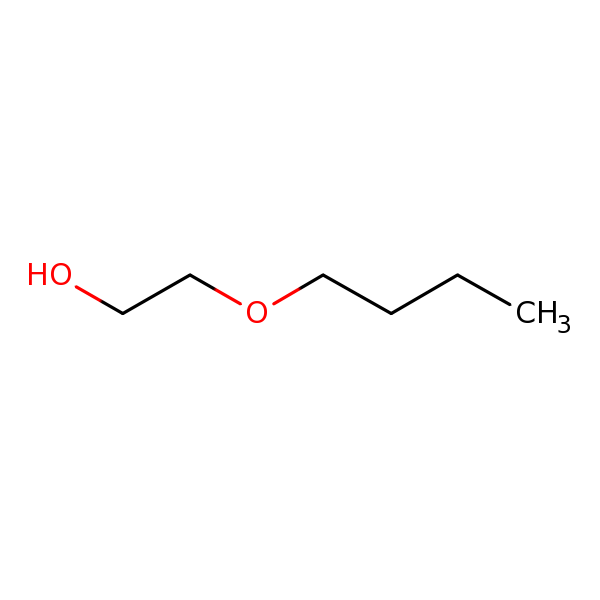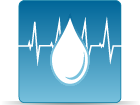Ethylene glycol monobutyl ether (EGBE) (2-Butoxyethanol)
CASRN 111-76-2 | DTXSID1024097
- Toxicological Review (PDF) (206 pp, 3.5 MB, about PDF)
- IRIS Summary (PDF) (31 pp, 290.0 KB, about PDF)
IRIS Toxicological Review of Ethylene Glycol Mono-Butyl Ether (EGBE) (External Review Draft)
On this page:
Alert
Notice - This site contains archived material(s)
Archive disclaimer
Archived files are provided for reference purposes only.
The file was current when produced, but is no longer maintained and may now be outdated.
Persons with disabilities having difficulty accessing archived files may contact the IRIS Webmaster for assistance.
Please use the contact us form if you need additional support.
Overview
EPA has conducted a peer review of the scientific basis supporting the human health hazard and dose-response assessment of ethylene glycol monobutyl ether that will appear on the Integrated Risk Information System (IRIS) database.Background
The draft Toxicological Review of EGBE provides scientific information on the effects pertaining to exposure to EGBE. EGBE was nominated for reassesement by OAQPS in response to a delisting petition filed by the ACC. Ethylene glycol monobutyl ether (also known as 2-butoxyethanol) is a colorless liquid with an ether-like odor. It is widely used as a solvent in various applications such as in surface coatings, spray lacquer, quick-dry lacquers, enamels, varnishes, varnish removers, latex paint, and metal cleaners and in commercially available cleaning products.The chemical is released to the environment primarily through the use of commercial and household cleaning products. EGBE is a high production volume chemical with an estimated 390 million pounds produced in the United States in 1992 (NTP, 2000). Human exposure to ethylene glycol monobutyl ether (EGBE) is predominantly occupational via inhalation and dermal contact. Individuals employed in the manufacture, processing, and handling of EGBE will have potentially higher exposures (ATSDR, 1998).
The primary routes of EGBE exposure to the general population are inhalation of contaminated indoor air and dermal contact with household products containing EGBE. The assessment will present reference values for the noncancer effects of EGBE (RfD and RfC), where supported by available data, and a cancer assessment.
| Date | Description |
|---|---|
| Oct 1999 | EPA posted the first toxicological review for ethylene glycol mono-butyl ether (EGBE) in the IRIS database. |
| 2002 | EGBE is nominated for reassessment by EPA/OAQPS in response to a petition to delist this chemical filed by the ACC. |
| Apr 2008 | EPA released the external review draft (reassessment) of EGBE for public comment. |
| Sep 2008 | EPA announced the details for the external peer review meeting. [Federal Register Notice Sep 25, 2008] |
| Oct 2008 | EPA announced a public listening session. [Federal Register Notice Oct 1, 2008] |
| Oct 2009 | EPA released the comments from the first and second rounds of this review. |
| Nov 2009 | EPA hosted an interagency science discussion on the review of the draft Toxicological Review of Ethylene Glycol Mono-Butyl Ether. |
| Mar 2010 | EPA released the final report and the interagency review draft with comments. |
Status
Concluding this review, it is expected that the final risk assessment will be added into the IRIS website.Additional Information
Comments on the assessment may be submitted and reviewed using the e-Government Regulations.gov web site. From the site, select Environmental Protection Agency and the keyword EPA-HQ-ORD-2008-0245 docket ID).Download(s)
This download(s) is distributed solely for the purpose of pre-dissemination peer review under applicable information quality guidelines. It has not been formally disseminated by EPA. It does not represent and should not be construed to represent any Agency determination or policy.
- Toxicological Review of ETHYLENE GLYCOL MONOBUTYL ETHER (EGBE) (External Review Draft) (PDF) (166 pp, 2.7 MB, about PDF)
- Charge to External Peer Reviewers (PDF) (4 pp, 68.4 KB, about PDF)
- 1. Consolidated comments from the first round of external peer review (PDF) (213 pp, 926.8 KB, about PDF)
- 2. Consolidated comments from the second round of external peer review (PDF) (17 pp, 149.4 KB, about PDF)
If you have a disability and the format of any material on our web pages interferes with your ability to access the information, please reach out to us using the Contact Us about IRIS form for assistance. To enable us to respond in a manner most helpful to you, please indicate the nature of the accessibility problem, the web address of the requested material, your preferred format in which you want to receive the material (electronic format (ASCII, etc.), standard print, large print, etc.), and your contact information.
Document Related Link(s)
Federal Register Notices
Related Links
Critical Effect Systems
Chemical Structure for
Ethylene glycol monobutyl ether (EGBE) (2-Butoxyethanol)

Synonyms
- Bucs
- Butoxyethanol
- Butyl Cellosolve
- Butyl Glycol
- Butyl Oxitol
- CASRN -- 111-76-2
- Dowanol EB
- Ektasolve EB
- Ethylene Glycol N-Butyl
- Ethylene glycol monobutyl ether (EGBE)
- Ethylene glycol monobutyl ether (EGBE) (2-Butoxyethanol)
- Gafcol EB
- Glycol Butyl Ether
- Glycol Ether EB
- Glycol Ether EB Acetate
- Glycol Monobutyl Ether
- Jeffersol EB
- Monobutyl Ether Of Ethylene Glycol
- Monobutyl Glycol Ether
- N-Butoxyethanol
- O-Butyl Ethylene Glycol
- Poly-Solv EB
- 2-Butoxy-1-Ethanol
- 2-Butoxyethanol
- 3-Oxa-1-Heptanol

